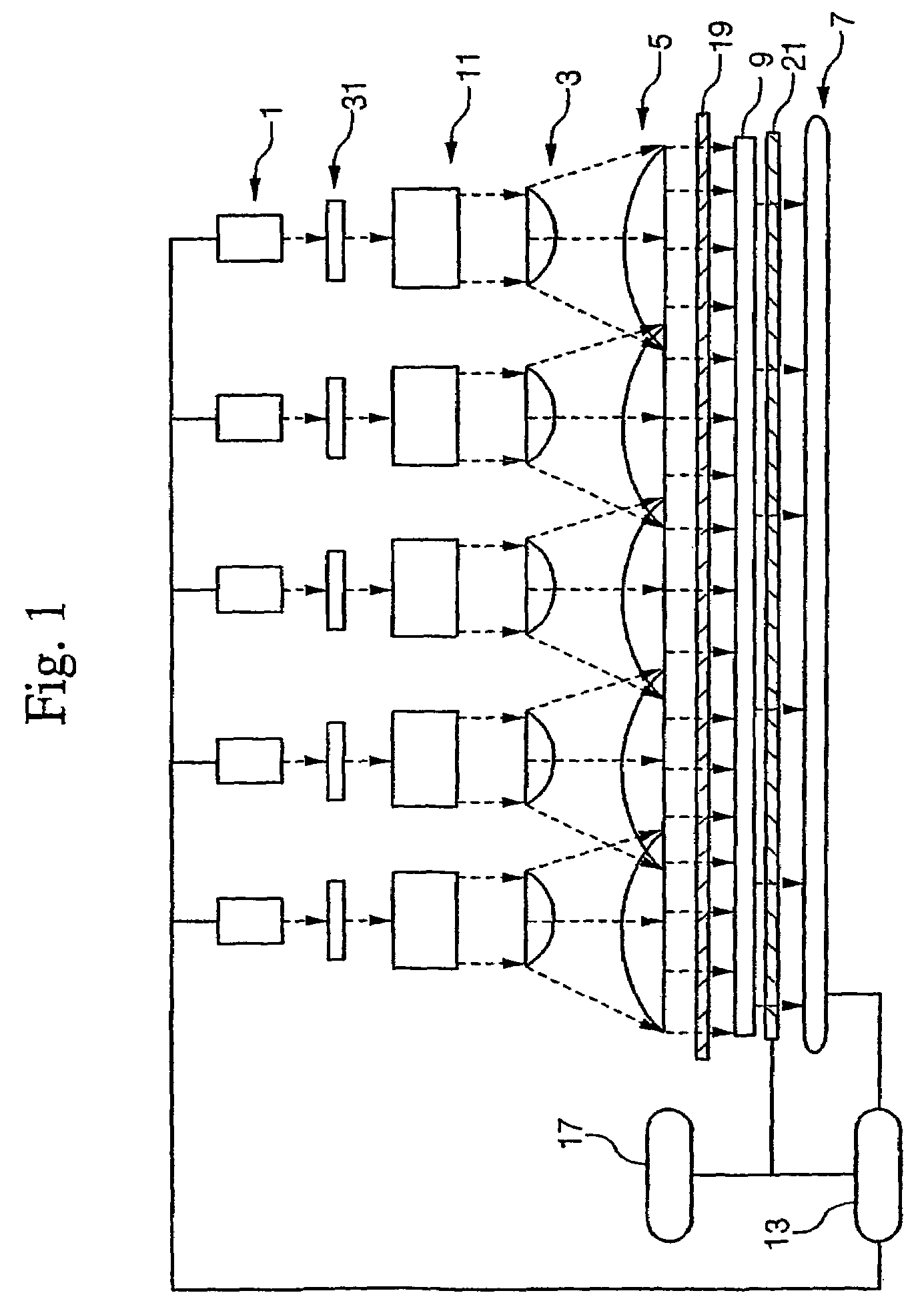Liquid crystal process defect inspection apparatus and inspection method
a liquid crystal and process defect technology, applied in the field of lcd manufacturing, can solve the problems of inability to detect kind of stain, different luminance distributions of stains from other areas, and inconsistent anisotropy on alignment layers, etc., and achieve the effect of 100% yield
- Summary
- Abstract
- Description
- Claims
- Application Information
AI Technical Summary
Benefits of technology
Problems solved by technology
Method used
Image
Examples
Embodiment Construction
[0047]A preferred embodiment of the present invention will be described hereinafter with reference to the accompanying drawings.
[0048]FIG. 1 is a schematic view showing an apparatus for testing a glass substrate immediately after depositing an alignment layer and / or rubbing the surface of the alignment layer.
[0049]In FIG. 1, laser beams are projected to the alignment layer of the glass substrate passing below the laser unit such that the anisotropy of the double refraction of the laser beam caused by the characteristics of the alignment layer is measured so as to be collected as data for determining whether or not the glass substrate has defects.
[0050]The laser beam emitted from the laser unit is shaped through an optical system and the shaped laser beam scans the surface of the glass substrate for measuring the double refraction such that it is determined whether or not the glass substrate is defective by comparing the measured double refraction data to a standard double refraction...
PUM
| Property | Measurement | Unit |
|---|---|---|
| wavelengths | aaaaa | aaaaa |
| wavelengths | aaaaa | aaaaa |
| oscillation wavelength | aaaaa | aaaaa |
Abstract
Description
Claims
Application Information
 Login to View More
Login to View More - R&D
- Intellectual Property
- Life Sciences
- Materials
- Tech Scout
- Unparalleled Data Quality
- Higher Quality Content
- 60% Fewer Hallucinations
Browse by: Latest US Patents, China's latest patents, Technical Efficacy Thesaurus, Application Domain, Technology Topic, Popular Technical Reports.
© 2025 PatSnap. All rights reserved.Legal|Privacy policy|Modern Slavery Act Transparency Statement|Sitemap|About US| Contact US: help@patsnap.com



